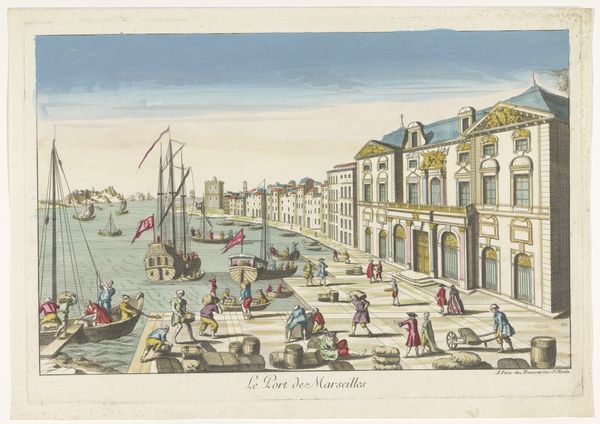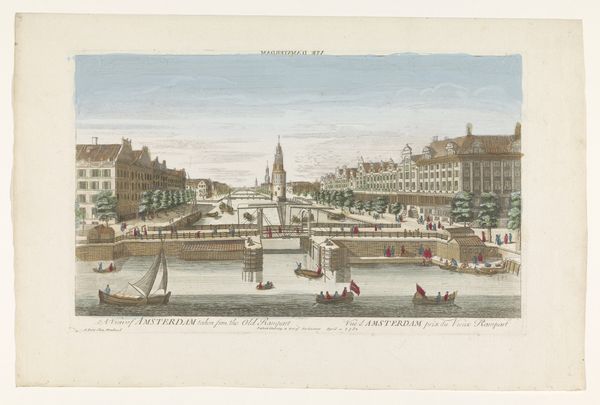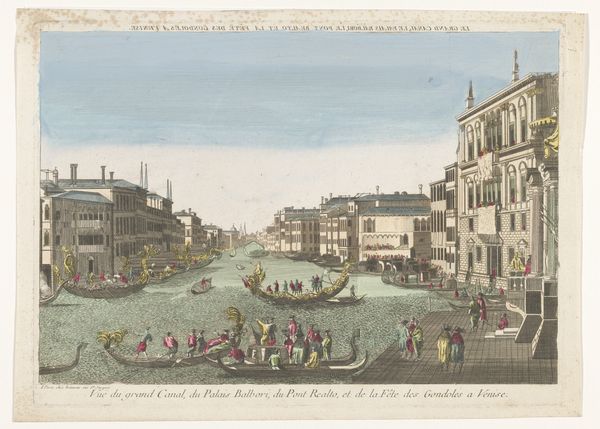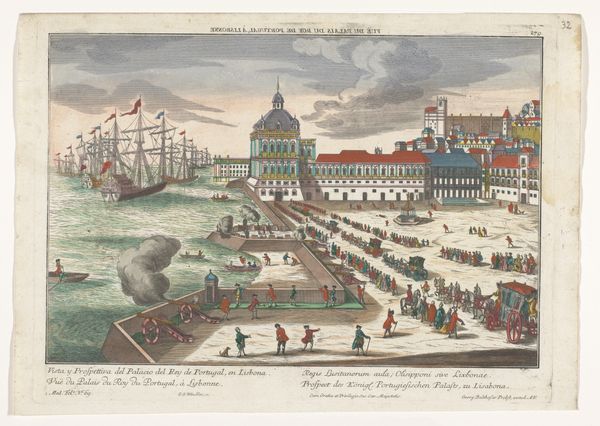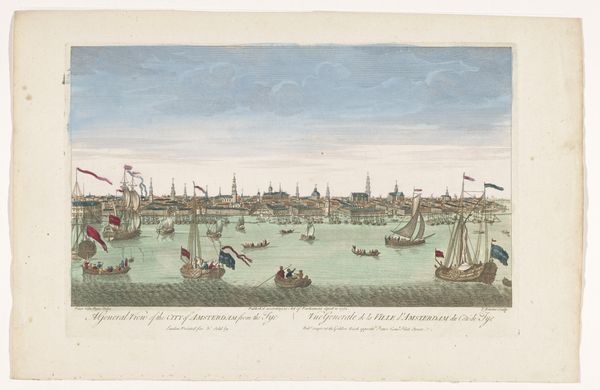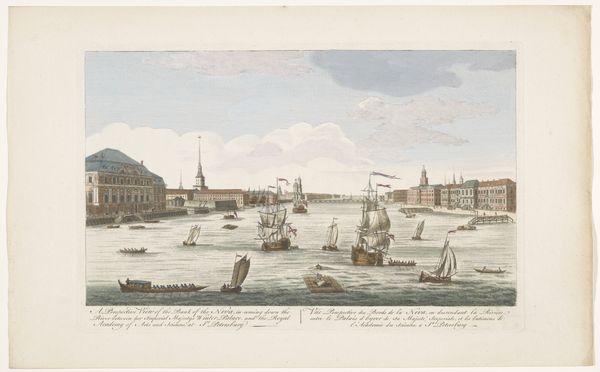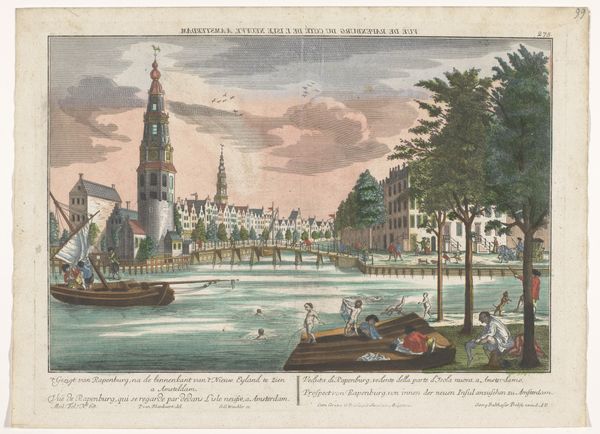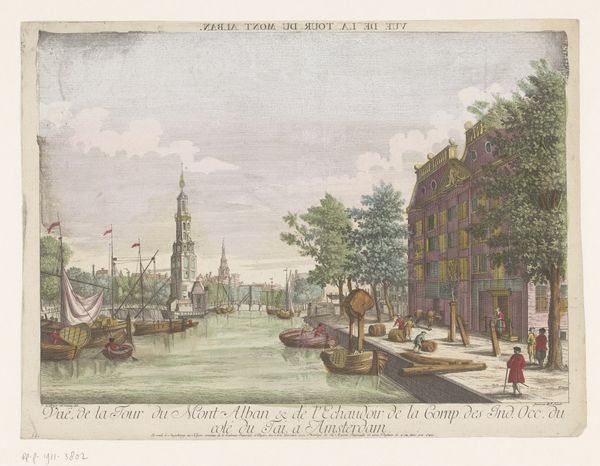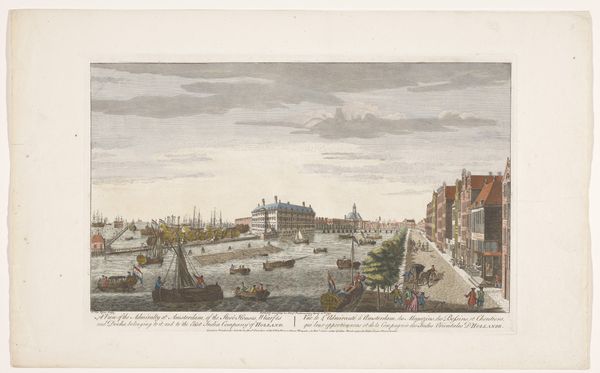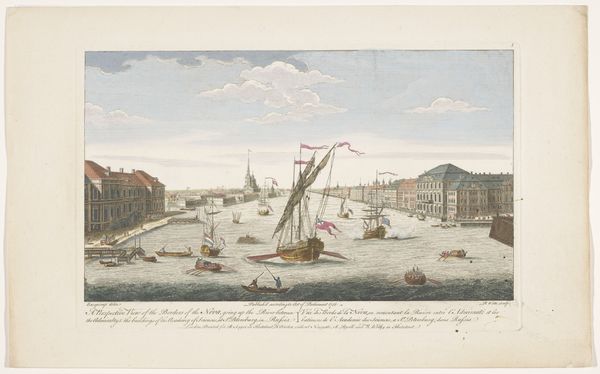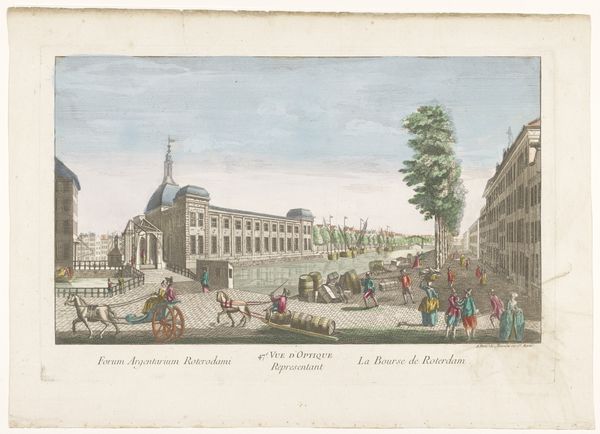
print, etching
#
baroque
# print
#
etching
#
15_18th-century
#
cityscape
#
genre-painting
#
rococo
Dimensions: height 301 mm, width 434 mm
Copyright: Rijks Museum: Open Domain
Editor: This etching, titled "View of the Town Hall and the Port of Marseille," by Jean-François Daumont, dating from around 1745 to 1775, depicts a bustling harbour scene. There is so much activity crammed in. What are your initial thoughts on the socio-political implications depicted in the work? Curator: Well, looking at Daumont's portrayal, I am struck by the implied socio-economic stratification. Notice the architectural grandeur of the buildings looming over the common workers on the docks. How does this contrast make you feel? Does it bring to mind ideas of labor versus capital, perhaps? Editor: It does create a feeling of distance, even disconnect, between the elite and the working class. They occupy the same space but almost seem to exist in different worlds within the print. Is that tension intentional, do you think? Curator: Precisely. Artists of this period often subtly critiqued or reinforced existing power structures through their depictions of everyday life. The 'genre-painting' aspect highlights labor but also arguably romanticizes it, obscuring the harsh realities. What's your take on that potential tension between romanticism and realism? Editor: It’s interesting. It feels staged somehow, almost performative, in the sense that even labor can become part of the spectacle of the city. The colours, while muted, give it a pleasant veneer. Almost obscuring the difficult lives of the dock workers? Curator: Indeed, it raises important questions. By examining the relationships between those represented – their class, labor, and their visibility or invisibility within the larger narrative – we start unpacking the historical context. Editor: This perspective makes me think more deeply about how the image portrays a carefully constructed social hierarchy. Curator: And, more importantly, invites us to consider the artist's own position within that hierarchy, and how their gaze shapes our understanding of Marseille at that time.
Comments
No comments
Be the first to comment and join the conversation on the ultimate creative platform.
